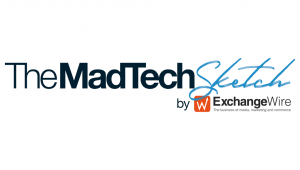IPA Bellwether Q1 2025: Marketing Budgets See First Fall in Four Years
by on 17th Apr 2025 in News

We look at the findings from the latest IPA Bellwether report, with insights from experts across the marketing industry.
Overall marketing budgets for Q1 2025 fell for the first time in four years, the latest IPA Bellwether report reveals. A net balance of –4.8% of firms cut their marketing budgets, contrasting the previous quarter which recorded a net balance of almost +2%. Evidence suggests that marketing spend was allocated elsewhere as a result of declining sales and reduced revenue.
Many companies have adopted a more cautious approach as the industry faces uncertainties from the political and economic spheres. As noted by the IPA's director general, Paul Bainsfair, the anticipation of the US’ new tariffs along with National Insurance increases and minimum wage hikes in the UK likely played a role in influencing marketers’ budget decisions for the quarter.
Amidst the downturn, some categories saw growth. Direct marketing was the standout performer, with its net balance rising to +9% (up from +5.6%). Sales promotions budgets achieved a net balance of +8% (up from +4.1%), marking their strongest growth in almost two years. Budgets were revised higher for events and PR too, at +5.4% and +3.4% respectively – although the expansions recorded for both were weaker than in the previous quarter.
Despite the overall budget decrease, the forecast is not negative: marketers express an optimistic outlook, and revisions to marketing budgets remain on a positive trajectory. Looking ahead, over 36% of marketing executives expect to allocate greater funding for the 2025/2026 financial period.
The events category looks set to lead the race for the coming year: a net balance of +16.6% of companies reported plans to increase event spend for 2025/2026 budget plans. Direct marketing will also be a priority for marketers, with a net balance of +12.9% planning increased spend. Meanwhile, a net balance of +2% of companies intend to increase main media ad spend.
We asked experts from across the marketing industry for their take on the findings. What do they make of the figures, and what should marketers be doing in light of the new forecasts?
This is a call to be agile, data-driven, and bold

While it's concerning to see UK marketing budgets decline, the optimism for the year ahead is encouraging. It’s a clear sign that marketers are doubling down on high impact to weather the storm. We’re seeing a strategic shift toward channels - like direct marketing and events – that deliver measurable ROI and create closer customer bonds.
As someone deeply embedded in the ad tech space, I see this as a call to be agile, data-driven, and bold in how we connect brands with audiences. The momentum behind AI, new technology and sustainable innovation is exciting, but creativity is what truly sets brands apart. It helps them cut through the noise, stay relevant, and build meaningful engagement. Using more enticing formats like video is also key – helping brands stand out in a cluttered environment. Despite the caution, the industry’s forward-looking mindset tells me we're preparing not just to weather volatility, but to evolve through it.
Toccara Baker, VP Field & Brand Marketing, TripleLift
Agencies need to focus on value
The picture painted by this quarter’s Bellwether is a bit bleak, but for agencies it should be a wake-up call to really focus on value.
The report shows cuts, yes, but spend is being redirected, not abandoned. We're seeing brands lean into digital channels that blend performance with brand building, a shift that reflects a desire for marketing that’s both measurable and accountable.

We need to be relentless in showing how marketing drives commercial outcomes, not just impressions. That means (finally) ditching last-click thinking and investing in proper measurement like MMM, not vanity metrics.
Growth will come from staying close to clients’ business problems. Agencies that bring ideas rooted in outcomes will keep growing, even when the market contracts.
Kim Berkin, Managing Director, Charlie Oscar
It's essential to balance performance with brand building

While the decline in UK marketing budgets in Q1 2025 signals understandable caution, the long-term optimism reflected in the current IPA Bellwether Report is encouraging. The uptick in direct marketing, events and sales promotions for example is a clear sign that brands are shifting towards more agile and measurable channels.
In times of uncertainty, data-driven, performance-led strategies underpinned with robust technology become even more vital, so the reported resilience in budget allocations for digital and direct marketing is promising. It also mirrors the growing demand for the personalised, real-time engagement we deliver through our omnichannel platform that enables buyers to make smarter decisions across every advertising channel – from video, DOOH and display to CTV.
It's equally essential to balance performance with brand building for the longer term, however challenging the landscape; despite the cuts faced by the main media this quarter, the rebound forecast for 2025/26 underlines this importance.
Dean Nagib, Commercial Director, Azerion UK
Premium publishers have a chance to stand out from saturated, low-attention channels

It’s a shame to see further decline in spend going to publishers, who are at the forefront of the push for better media quality. As digital advertisers shift from viewability to attention metrics as their benchmark for campaign success, premium publishers have a chance to stand out from saturated, low-attention channels. Advertising beside engaging, long-form content takes attention from the milliseconds typically expected on digital channels to seconds, even minutes. Once the true value of their inventory is understood, we’re confident publishers can secure a lasting place on media plans.
Fiona Salmon, Managing Director, Mantis
Brands are seeking more accountable, outcome-driven channels

The Q1 2025 IPA Bellwether report highlights the pressures UK marketers are navigating - from inflationary costs to global trade uncertainty. Yet amid these challenges, the continued growth in direct marketing and sales promotions shows that brands are seeking more accountable, outcome-driven channels. This is where retail media is stepping into the spotlight.
We're seeing increased demand from advertisers looking to harness the power of retail media networks for their precision, scale, and measurable performance. As brands shift spend toward environments that deliver clear ROI, retail media offers a unique opportunity to connect with shoppers closer to the point of purchase, powered by rich first-party data and contextual relevance.
Babs Kehinde, Senior Director, Commerce Media EMEA, PubMatic
Companies are having to think hard about not just what they sell, but how they are seen

People and businesses alike are feeling the economic pinch, severing once-sturdy brand and partner loyalties. With everyone shopping around for a better deal, companies are having to think hard about not just what they sell, but how they are seen. This is why we’re seeing a boost in perception-building channels such as events and PR; settings where there can be dialogue, and where brands can really own their messaging and steer the conversation. Most media channels are simply too saturated for that quality of communication, and quantity alone doesn’t cut it when everyone’s being sold to all the time.
Victoria Usher, CEO and Founder, GingerMay
IP address geolocation stability is needed

What’s interesting is that even with such a volatile macroeconomic climate, advertising budgets for video are basically unchanged (-1%), and direct marketing budgets actually increased in the opening quarter of 2025. This is indicative of brands’ and agencies’ desires to own their futures and not rely on third parties as much. Brands, agencies, and everyone in between are building their own ID graphs to understand their customers better than ever, and looking to use AI to reach them efficiently.
With CTV a priority channel for advertisers, it is crucial they are able to own this audience too. To make this a reality, IP address geolocation stability is needed to tie marketing activity to measurable returns. Many advertisers don’t yet realise this IP volatility is an issue and must be at the top of their lists to ensure their CTV campaigns meet their goals.
Vinod Kashyap, Chief Product Officer, Digital Envoy
Every part of the advertising process can reap the benefits of automation

It’s natural that advertising pivots from brand-building to direct channels and sales promotions when budgets are tight, but a focus on short-term gains can erode long-term brand equity. So how can brands and agencies make mid and upper funnel campaigns more budget-friendly to ensure they maintain brand awareness? The answer is, in short, AI.
Natural language interfaces make data more accessible; machine learning models rapidly assemble audience personas; generative AI dynamically builds creative assets. All of this, and more, is enabling advertisers to generate huge volumes of ads and content that resonate more effectively with target audiences in record time. Every part of the advertising process can reap the benefits of automation, eliminating the cost and resource barriers that currently see more ambitious media plans end up on the cutting room floor.
Lawrence Horne, UK Country Director, Ogury
We are in an era of outcomes
The latest IPA Bellwether report presents a mixed picture of immediate headwinds and future optimism, but ultimately the first decline of marketing budgets in four years serves as a reminder that we are in an era of outcomes. Marketers are under pressure to do more with less, and what matters in this climate is driving positive, measurable business results.

The focus should be on a strategic, data-driven approach that creates a comprehensive and measurable view of their audiences' path to purchase. This not only helps optimise media across the customer journey for better results, but also provides a clear picture of what is performing, return on advertising spend (ROAS), and incremental return on advertising spend (iROAS), to understand what is driving customer growth.
Building this view requires a partnership mindset centred around data collaboration with other businesses, as no single organisation can see the whole customer journey on its own. Marketers should look to embrace technologies that facilitate these partnerships, including neutral and interoperable data clean rooms that can connect seamlessly across the full range of high-quality data owners. Access to such data can be unlocked from a variety of partnerships, whether it be endemic or non-endemic brands, publishers, and even walled gardens.
Alexia Nakad, VP of Brands, UK and MENA, LiveRamp
AI is a lifeline

In the face of economic uncertainty, some advertisers are thinking twice about investing in their tech infrastructure and instead are waiting until budgets are stronger. But as respondents to the latest IPA report have highlighted, this is a mistake. Choosing to kick the investment can down the road now will reduce advertising effectiveness in the long run. No pound of media spend can go to waste – the bottom line needs to benefit now with measurable outcomes across channels.
In today’s fragmented media landscape – with hundreds of identifiers and diverse formats - the days of relying solely on human intuition for media efficiency are over. Achieving clear attribution in this omnichannel, multi-ID environment demands game-changing technology that integrates disparate data in real-time.
The automated intelligence of AI could not have come at a better time, and it is clear from the report’s respondents that the technology is regarded as a lifeline. Enabling media-buying teams to be smarter with spend allocation across the omnichannel mix, this next stage of ‘agentic AI’ is optimising bidding to achieve new levels of reach, effectiveness, and efficiency.
Phil Acton, Country Manager UK, Adform
The objective is clear: Achieve greater impact with leaner budgets
As advertisers navigate the challenges of rising operational costs and new economic pressures, the objective is clear: achieve greater impact with leaner budgets. This does not mean scaling back activity but instead being smarter with it. Moving away from the traditional broad-stroke approach to more precise delivery, with enhanced engagement and yielding better returns.

As respondents to the IPA report highlighted, this is being propelled by the next wave of AI for efficient media performance. The technology can analyse data at the impression level, to ensure that the right user is reached at the optimal time, with hyper-relevant messaging tailored to resonate deeply and drive measurable results.
By investing in AI-led creativity, advertisers will stay ahead of the curve and distinguish their brands in a crowded marketplace with receptive consumers – unlocking improved outcomes during this period and beyond.
Guy Jackson, Chief Commercial Officer, RAAS LAB
Tailored AI solutions will lead the way for brands

AI-led media efficiency is revolutionising digital advertising by safeguarding media from low-quality content and enhancing overall performance. This trend is confirmed by IPA Bellwether’s most recent report, which highlights the sustained high demand for AI solutions in advertising.
Custom bidding algorithms are a key component of this transformation. By processing signals such as first-party data and offline sales insights, they dynamically optimise media strategies, ensuring ad spend supports brand-specific outcomes. As tailored AI solutions become more widely available, across open web and walled garden environments like social, they will lead the way for brands aiming for stronger performance and more meaningful business results.
Nick Reid, SVP & Managing Director EMEA, DoubleVerify
Budgets may be tightening, but investment is sharpening

The latest IPA Bellwether signals a shift – not a pullback, but a pivot to what delivers. Budgets may be tightening, but investment is sharpening. Advertisers are doubling down on channels that offer precision, performance, and proof – and CTV delivers all three. AI is no longer hype; it’s driving smarter strategies, sharper targeting, and real results. With over a third of brands planning to increase spend in 2025/26, the message is clear: this isn’t retreat. It’s recalibration with intent.
Ed Wale, VP, International, LG Ad Solutions
Ad SpendAd TechDigital MarketingMarketerMarketing










Follow ExchangeWire